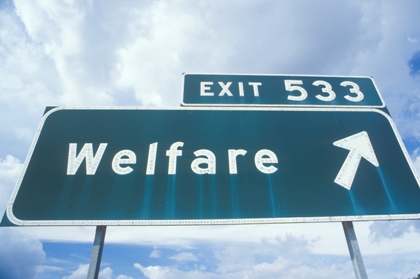
In 2009 (based on data collected in 2010), 57 percent of households headed by an immigrant (legal and illegal) with children (under 18) used at least one welfare program, compared to 39 percent for native households with children.
Camarota also notes that low education among immigrant-headed households is part of the problem:
Of households headed by an immigrant who has not graduated high school, 80 percent access the welfare system, compared to 25 percent for those headed by an immigrant who has at least a bachelor’s degree.
With means-tested welfare spending approaching $1 trillion per year and 15 percent ($100 billion per year) of total spending going to households headed by immigrants with high school degrees or less, limiting low-skill immigration is one way to tackle the problem. The Heritage Foundation’s Katherine Bradley and Robert Rector write:
Government policy should limit future immigration to those who will be net fiscal contributors, paying more in taxes than they receive in benefits. The legal immigration system should not encourage immigration of low-skill immigrants who would increase poverty in the nation and impose vast new costs on already overburdened taxpayers.
In addition, the government should not provide amnesty or “earned citizenship” to illegal immigrants, which would provide illegal immigrants with full access to the U.S. welfare system. Of the 11 million to 12 million illegal immigrants in the U.S., at least 50 percent lack a high school degree. Giving this population amnesty and access to welfare would lead to a staggering increase in future welfare costs.Growth in welfare spending is already on an untenable path; importing poverty, failing to reform the system, and allowing for the unlimited growth of welfare entitlements is a recipe for failure.
http://blog.heritage.org/2011/04/05/poverty-immigrating-to-americas-welfare-state/
Theits a lack of high wages jobs thats causing this problem.
ReplyDelete